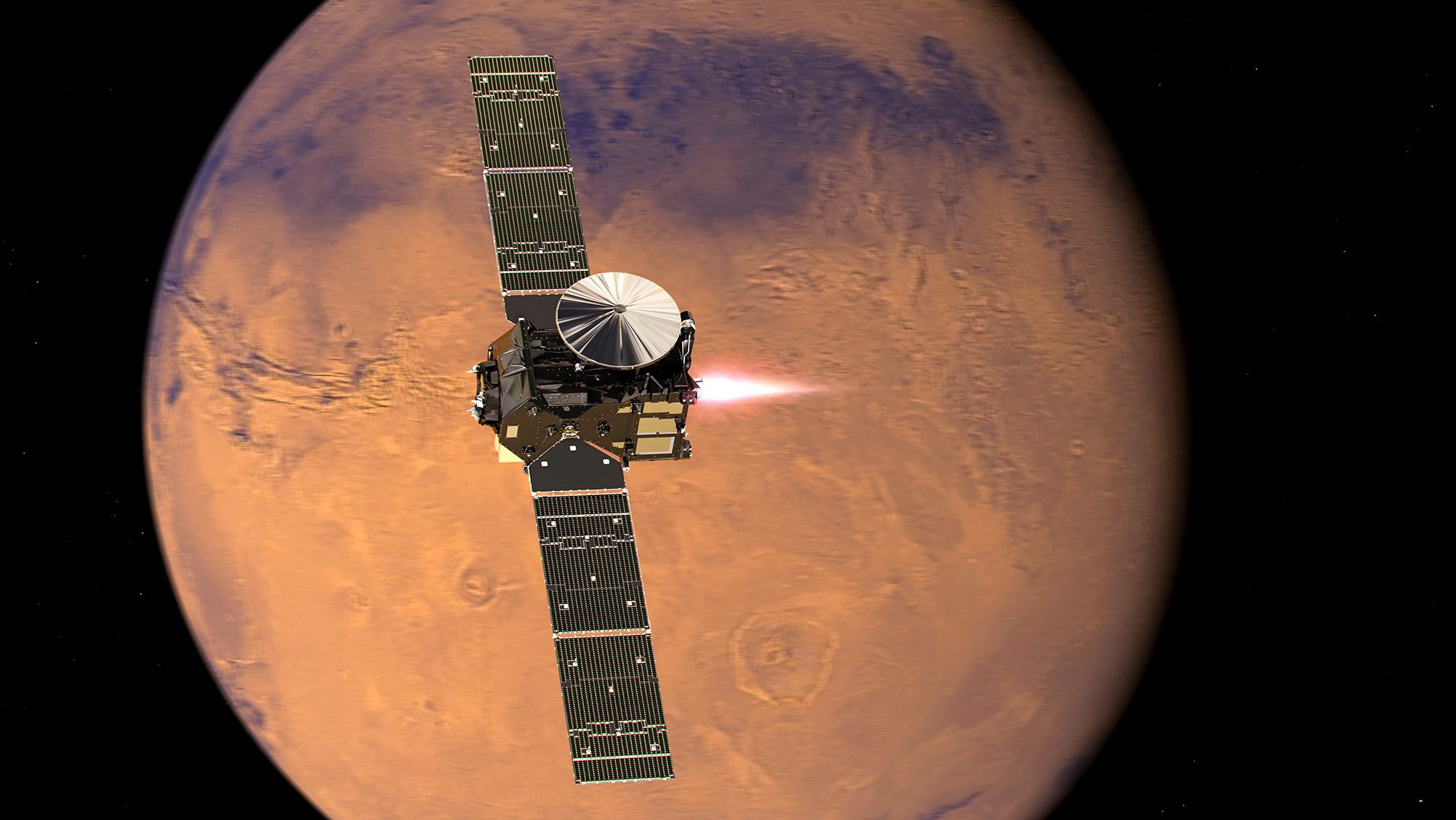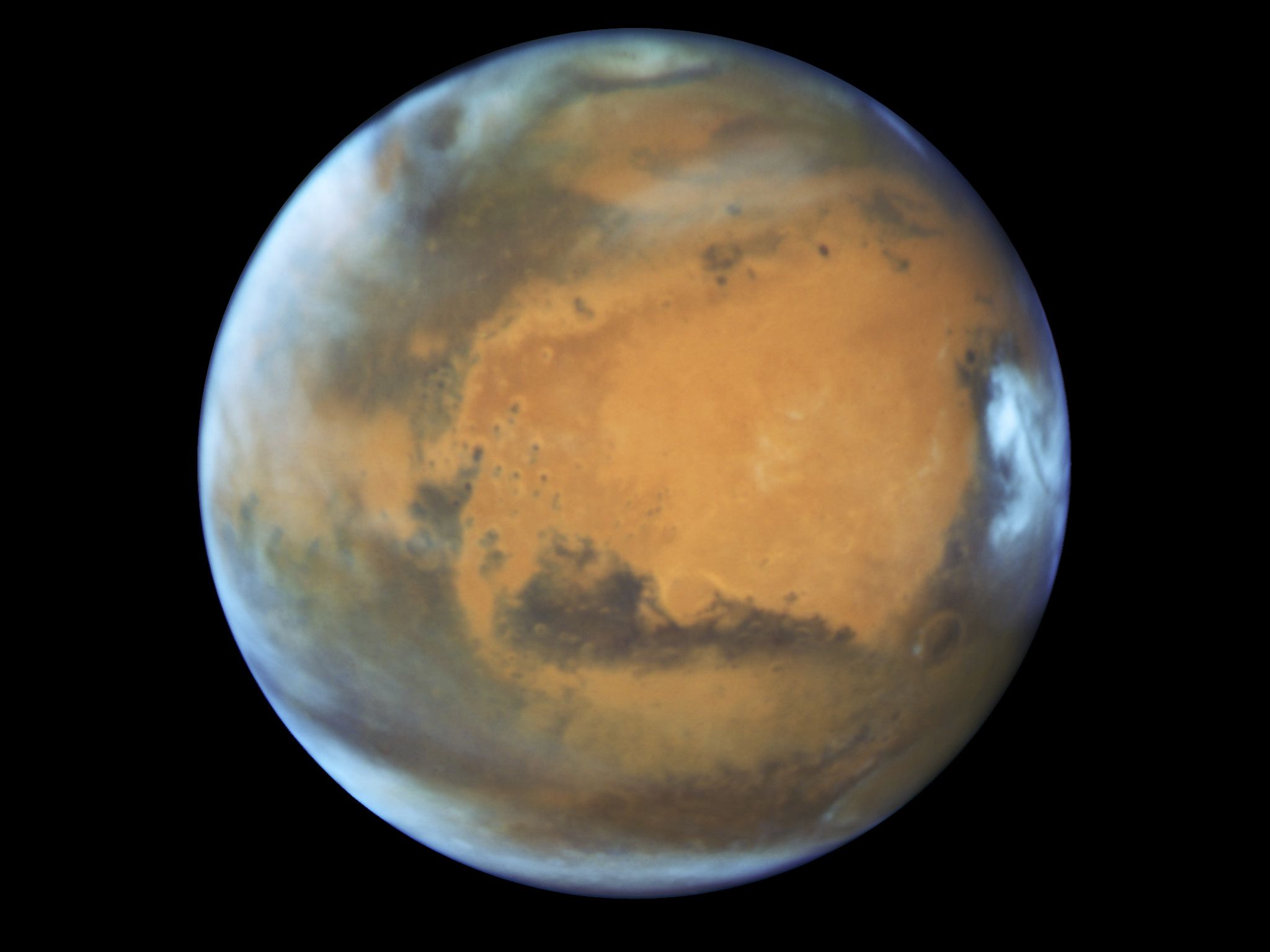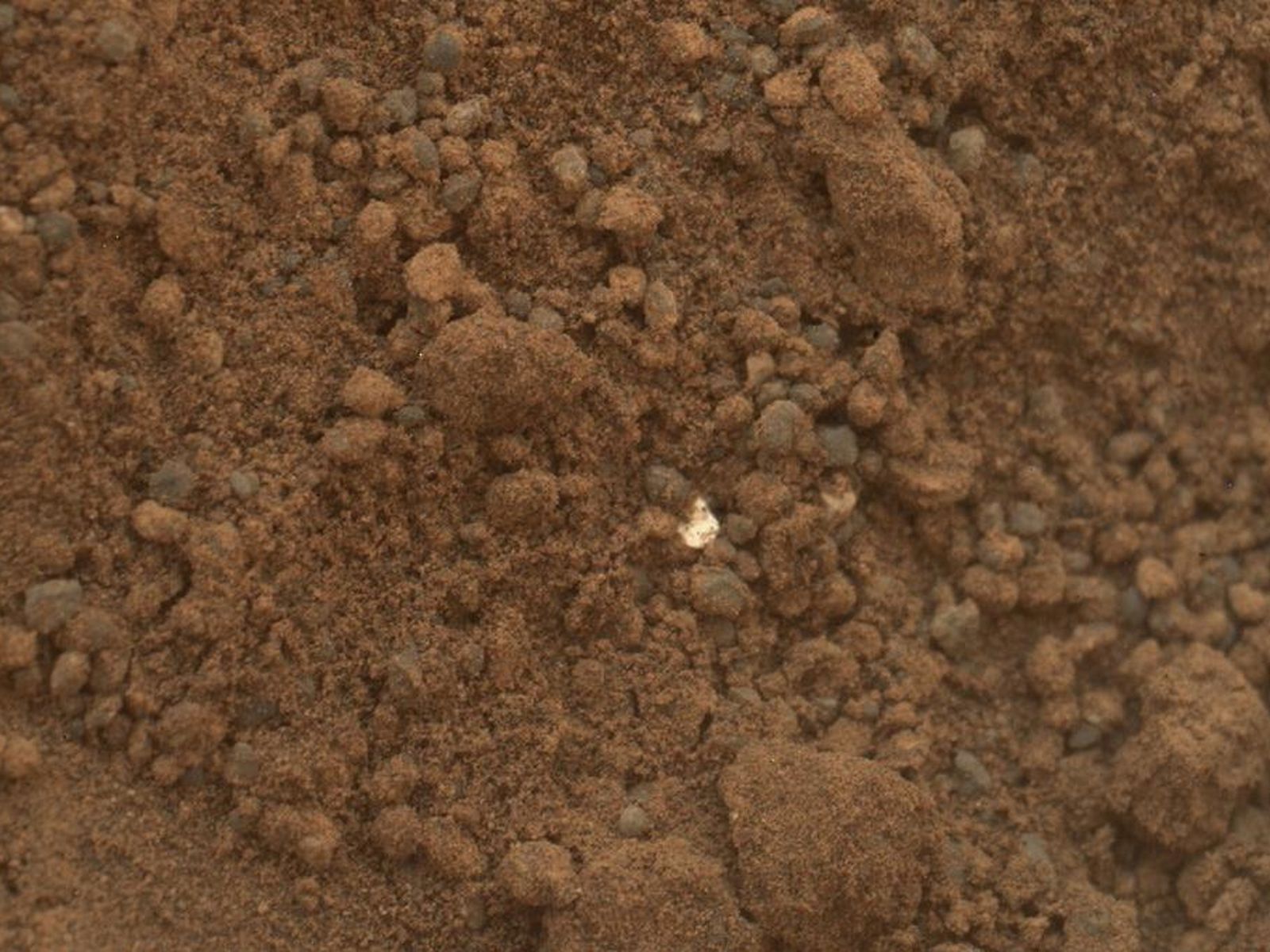ESA and NASA team up to bring pieces of Mars to Earth
17 May 2018
Spacecraft orbiting Mars and exploring its surface have made many exciting discoveries, helping us to learn much more about Mars, Earth, and how our Solar System formed. Now ESA and NASA have decided to team up and take the next step: collecting soil from the surface of Mars and sending it back to Earth!
This is a challenging mission, but an important one. So far we have relied on robots and space probes to analyse soil samples on Mars. If we had a sample here on Earth, we could use much more advanced equipment, and let human experts study it up close. The samples could even be studied again when we develop more advanced laboratory equipment!
Scientists think that three missions are needed to get a soil sample from Mars to Earth. First: collecting samples. NASA’s 2020 Mars Rover will scoop up soil, filling 31 canisters, each about the size of a pen, and safely storing them to be collected later. Around the same time ESA’s ExoMars rover, set to land on Mars in 2021, will be drilling two metres below the Martian surface to search for evidence of life!
The second mission will see a small rover land on Mars and collect the pen-sized canisters containing the soil. The small rover will then head to a Mars Ascent Vehicle, which is a little rocket with space to hold the samples. Once the small rover has passed over the soil, the Mars Ascent Vehicle will blast off from the surface and go into orbit around Mars!

ESA’s ExoMars orbiter is near Mars right now, helping us to learn more about the Red Planet
Then comes the third mission. A bigger spacecraft will be sent from Earth to Mars in order to collect the Mars Ascent Vehicle and its precious cargo of soil, before returning to Earth! The samples, inside a special container, will then be dropped onto Earth to land safely in the United States. They will be collected and sent to special laboratories, where scientists from all around the world will be able to study them!
This is a very ambitious mission, but ESA and NASA have lots of skilled experts and equipment. Do you think that this plan will work? If it does, would you like to study a piece of Mars?
Cool fact: ESA’s ExoMars orbiter is already circling Mars to investigate its atmosphere!






